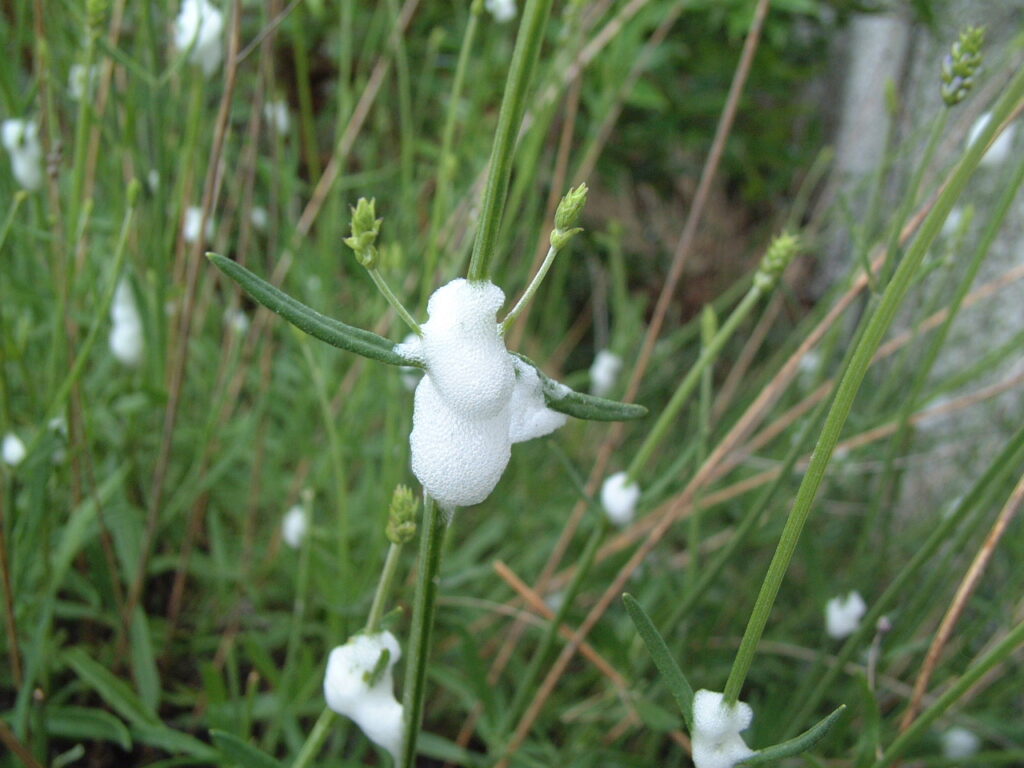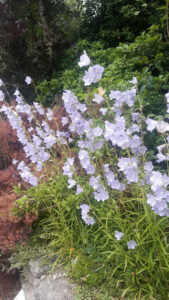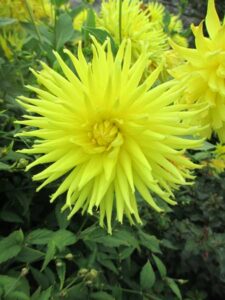Gardening
with Charlie Wilkins
A PLAGUE OF SPITTLEBUGS
Doesn’t the busyness of the garden in summer sometimes become wearisome? Plants grow rampant and begin to smother each other as the ‘middle aged spread’ continues unabated. Weeds too, become tall, lanky, and excitable, encouraged first by summer downpours then hilarious sunshine. I long for the controlled lines of dormant shrubs, for a biddable earth without the anarchy of hairy bitter-cress, clover, and creeping buttercup; for freedom from flying ants, greenfly, and the scourge of disgusting cuckoo spit!
Not since early this decade has gardeners and the farming community seen such an explosion in the countryside of a family of insects called froghoppers. Their other name, popular and very apt is ‘cuckoo spit’, taken no doubt from the frothy mass of bubbles (illustrated) which surrounds the larval stage of each immature bug. Each spit may contain as many as five insects, all relatively harmless in small infestations, but not when they arrive in legions strong.
The camouflage for frog hoppers is perfect and as a result are seldom in danger from insect eating birds or small animals such as adult frogs. Their common name is derived from the ‘spit’ (which it resembles) and ‘cuckoo’ from the season in which it is first noticed (about the time of the arrival of the cuckoo bird) which in folklore was supposed to create the spit. In North America, the more common name for the froghopper is spittlebug.
The adult frog hopper is, in fact, rated as a bug, and in appearance is like a tiny, fat, grasshopper. Being green in colour he is hard to spot on foliage, and with his excellent mobility is even harder to catch. Seen most frequently on soft green shoots (older stems are too tough for its sap-sucking jaws) the froghopper larvae develop into the adult stage before the onset of autumn. It may, depending on the species, turn brown in colour, its wing cases harden, and it will leap and fly in joyful abandon having forsaken its frothy lair well before the arrival of late August.
On roses and especially lavender, the froghopper may cause stems and shoots to become distorted, and leaves wilt and curl. Apart from these, perennials such as asters also suffer, so too campanulas, blackberries, raspberries, and many members of the carnation (dianthus) family. The young feed on the plant’s sap whilst the adults damage the leaves. Easily controlled by spraying with a forceful jet of water, it may sometimes be better to use any of the commercially made insecticides so that they do not return. As with all insecticides, be sure to add a squirt of washing-up liquid to the preparation in advance of application. This will help the solution to stick better on all waxy foliage.

THE AUGUST GARDEN
DINING OUT: I have always loved the temptation (and invitation) to dine in the garden during August. But then, Covid put an end to all that in recent years, 2021 being no exception. If however the days this month turn benign, I urge all to avail fully of those afternoons which you would hug if you could only get your arms around them! To dine out in a white garden is exciting, especially on warm evenings when the moon comes up early. I say ‘early’ for no one wants to wait until midnight before tucking in.
WHITE FLOWERS: For a white show during August there is still nothing to beat the mop-head hydrangeas of which the generous, billowing clouds of ‘Madame Emile Mouillere’ and the rather lax ‘Annabel’ are best for sustaining pools of brightness into the night. White forms of Phlox paniculata which are still in abundant bloom have a similar capacity to illuminate late summer evenings as do large pots of the recently returned snow-white Busy-Lizzies, and regal pelargoniums.
The annual cosmos, with its feathery foliage and large daisy-like blooms needs constant deadheading but if you attend to this, they will go on producing more and more right up to late autumn. In fact, if you feed them well from planting, these annual flowers will still be at their best as all others begin to taper off. The white form, in isolation, is truly spectacular. By isolation I mean a planting on its own preferably beneath the likes of a tall evergreen shrub or other garden plant which is currently not in bloom. Anything in white will usually look dramatic (and probably smell delicious!) in an August evening garden.
ROSES: From now, that floriferous, almost invasive display from rambler roses will be over for another year, and it will be time to take them to task over their bullish behaviour. Strong new shoots will trust up from below soil level to become entwined with the older growths all vying for position in what can easily become a solid tangle of thorny shoots. Before it reaches this impossible situation remove the shoots that carried the blooms this year, cutting away the oldest and thickest from as low down the plant as you can manage. Secateurs may not be man enough for some of the woodier stems so use loppers to make an easy meal of them. Once a few of these have been removed you will get a better picture of what is going on and be left with a balanced plant with well-placed shoots that will carry another fine display of quality blooms next summer.
HOSTAS: By now, growers of hostas are fully aware that they need a site shaded from the midday sun and a humus-rich soil which holds (and maintains) a plenty of moisture. However, not too many know that the golden-leaved forms need more sun than the others to achieve maximum intensity but, if you find the brilliance embarrassing, confining them to the shade keeps them chartreuse. If you have blue-leaved varieties (Hadspen Blue with small leaves and Sieboldiana elegans with large) do not forget that these can suffer from starvation despite being pampered with copious amounts of manure about their feet. Many of those with blue foliage slowly develop a hard, woody plate which prevents the young roots from feeding. When this is noticed, the plant needs to be divided, the woody bits removed (and discarded permanently) and the outer, fresher pieces set in new ground. Do this now and not next spring.








